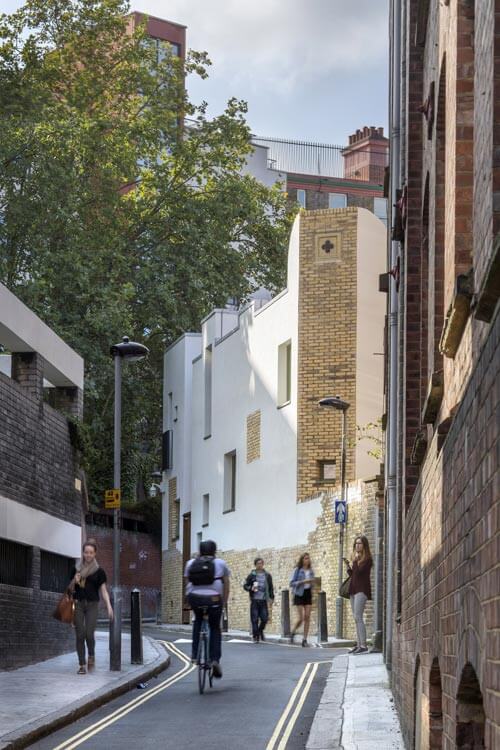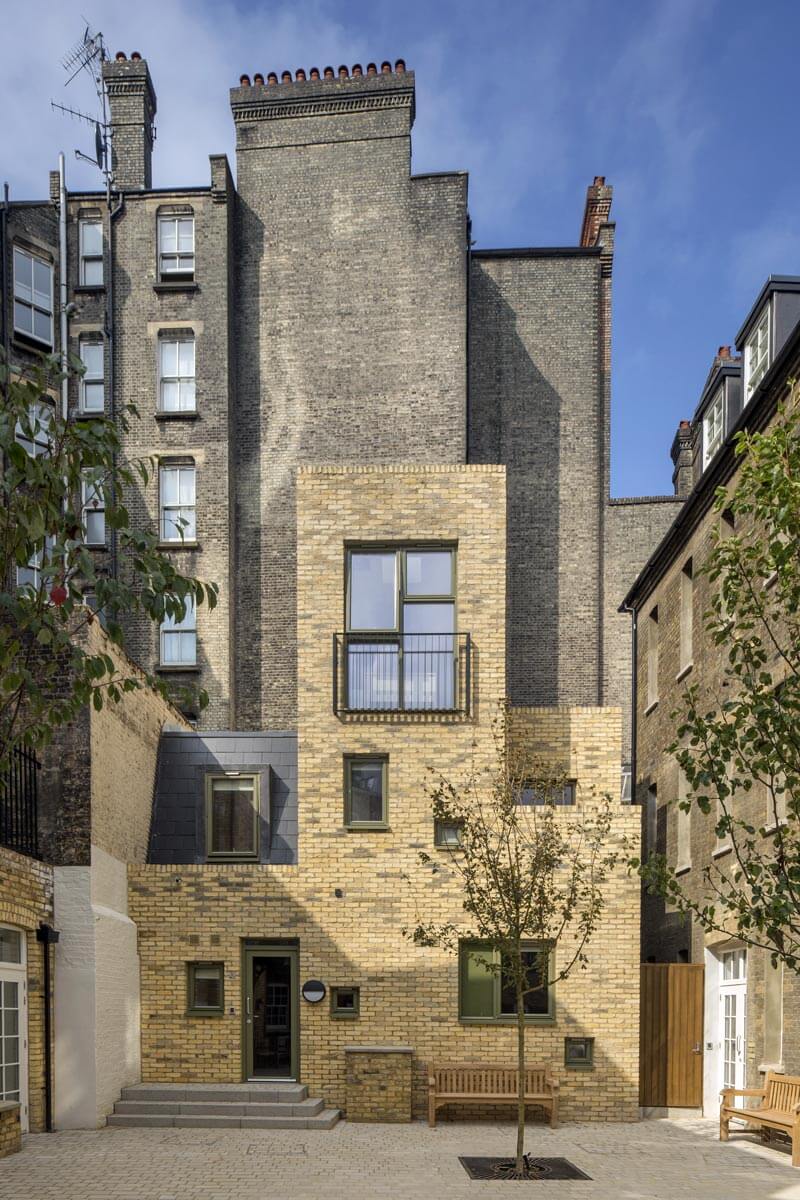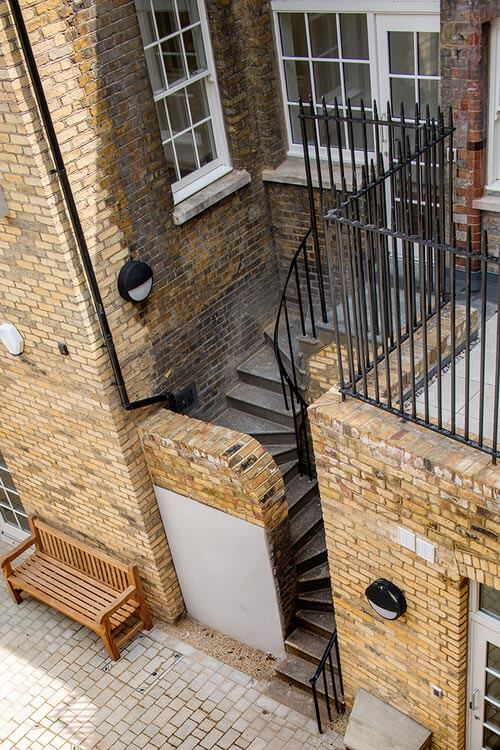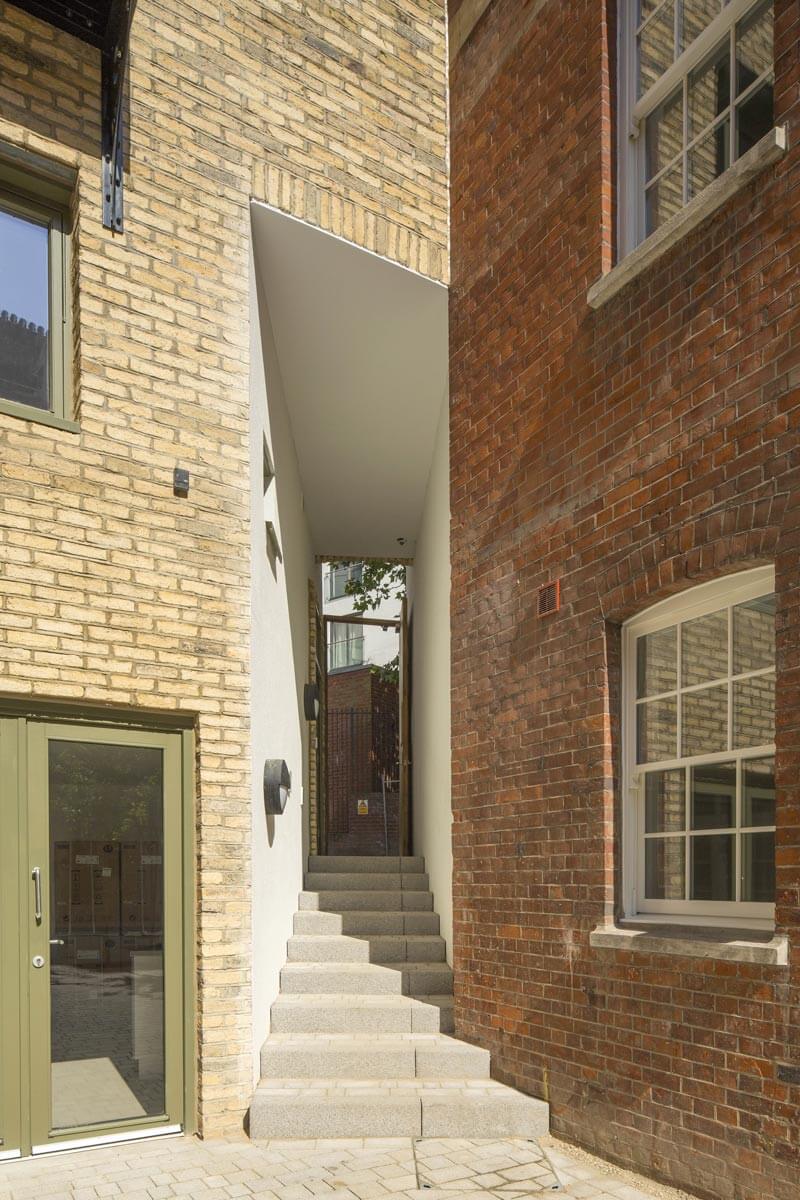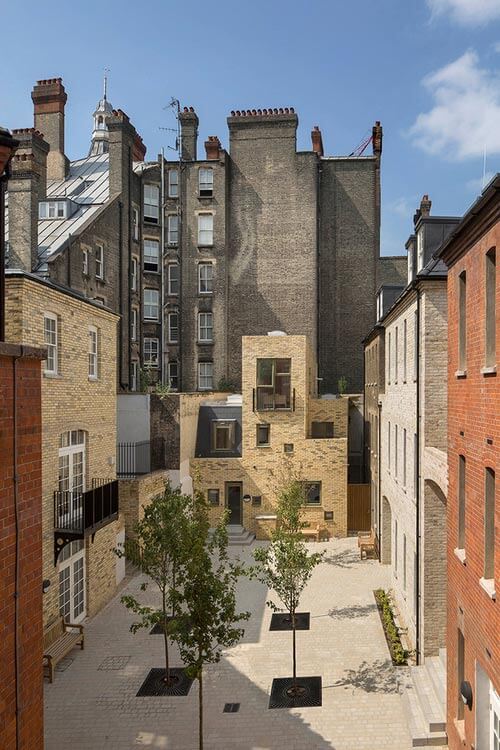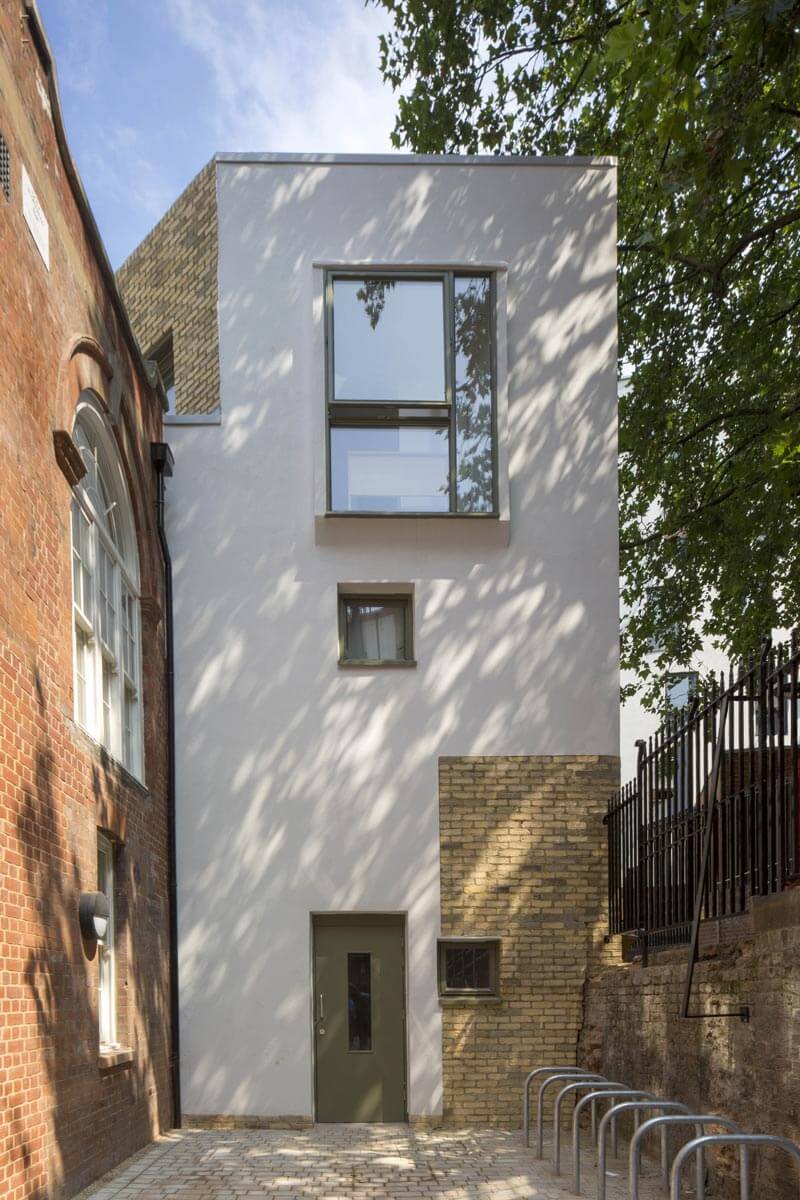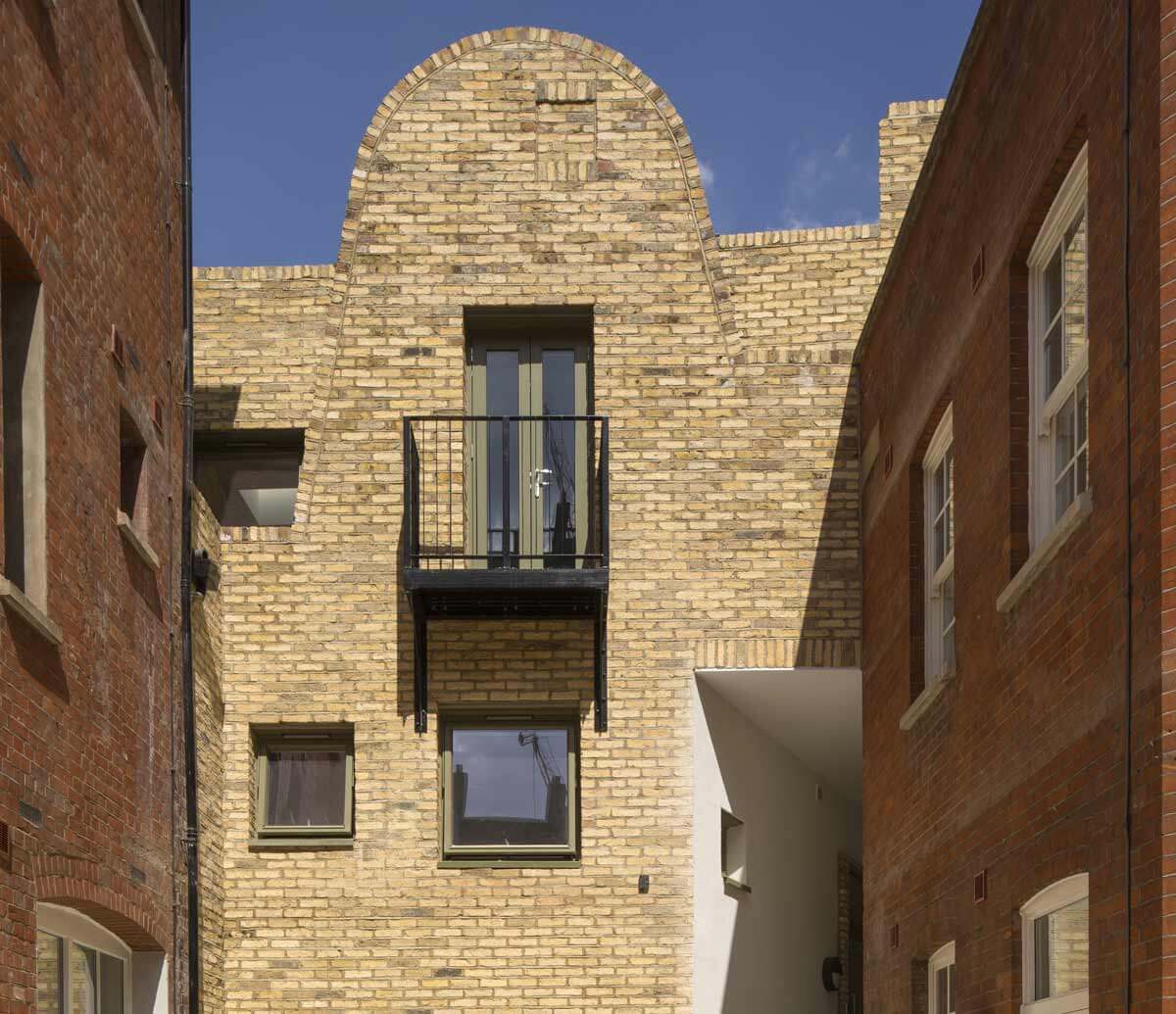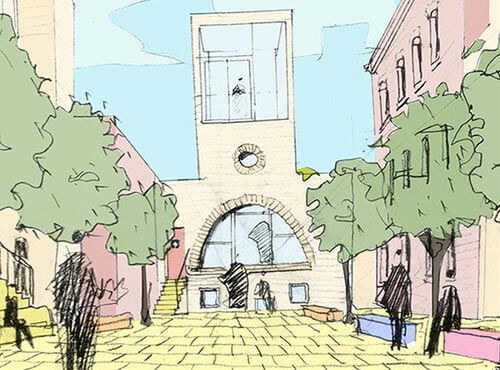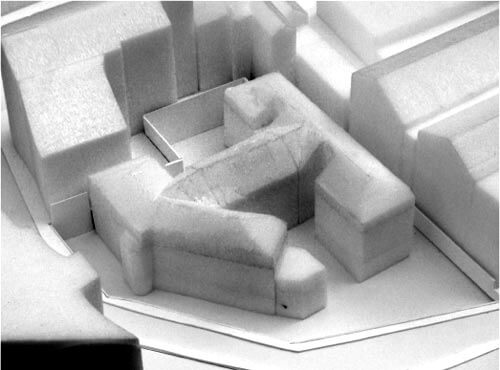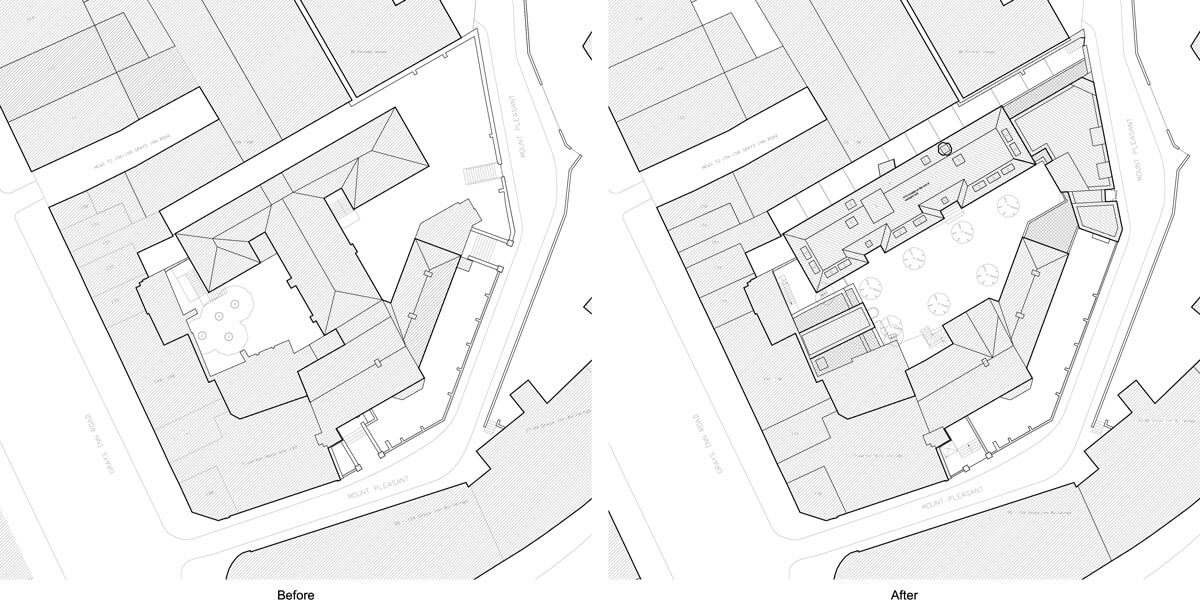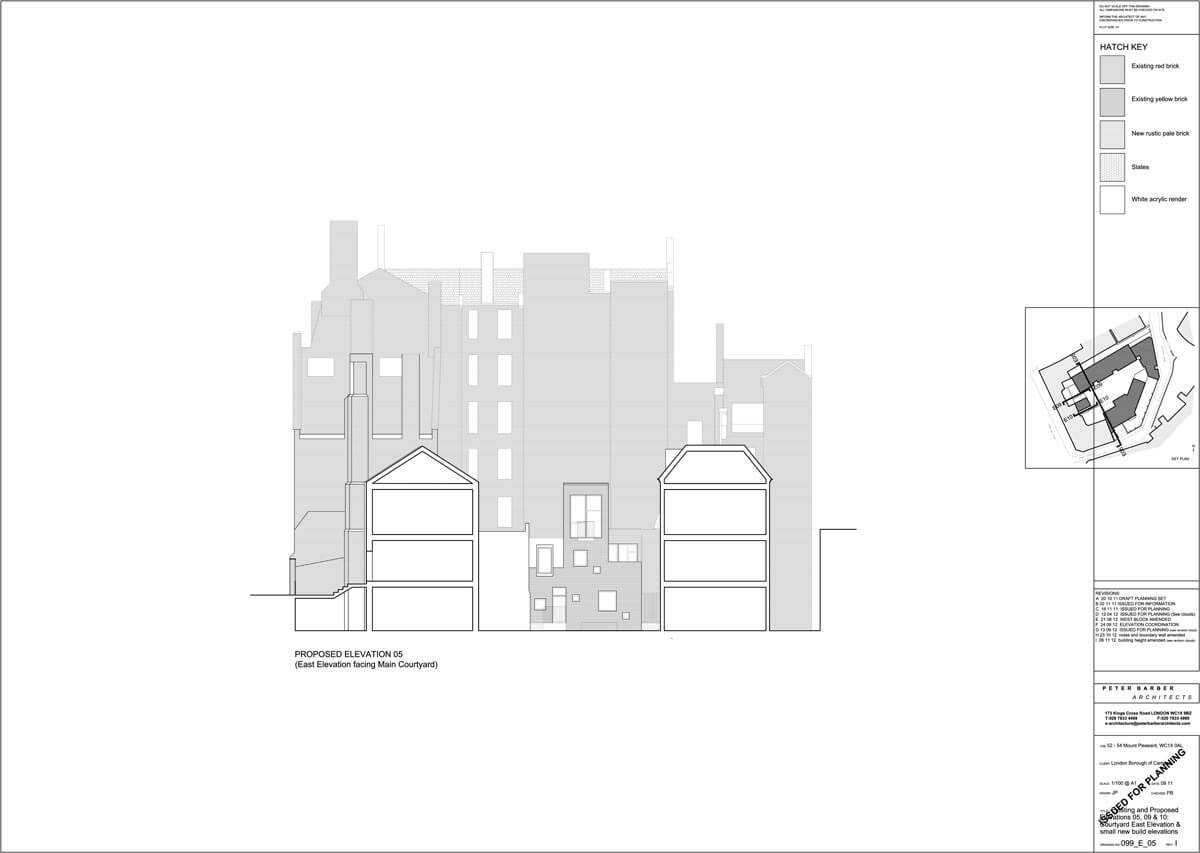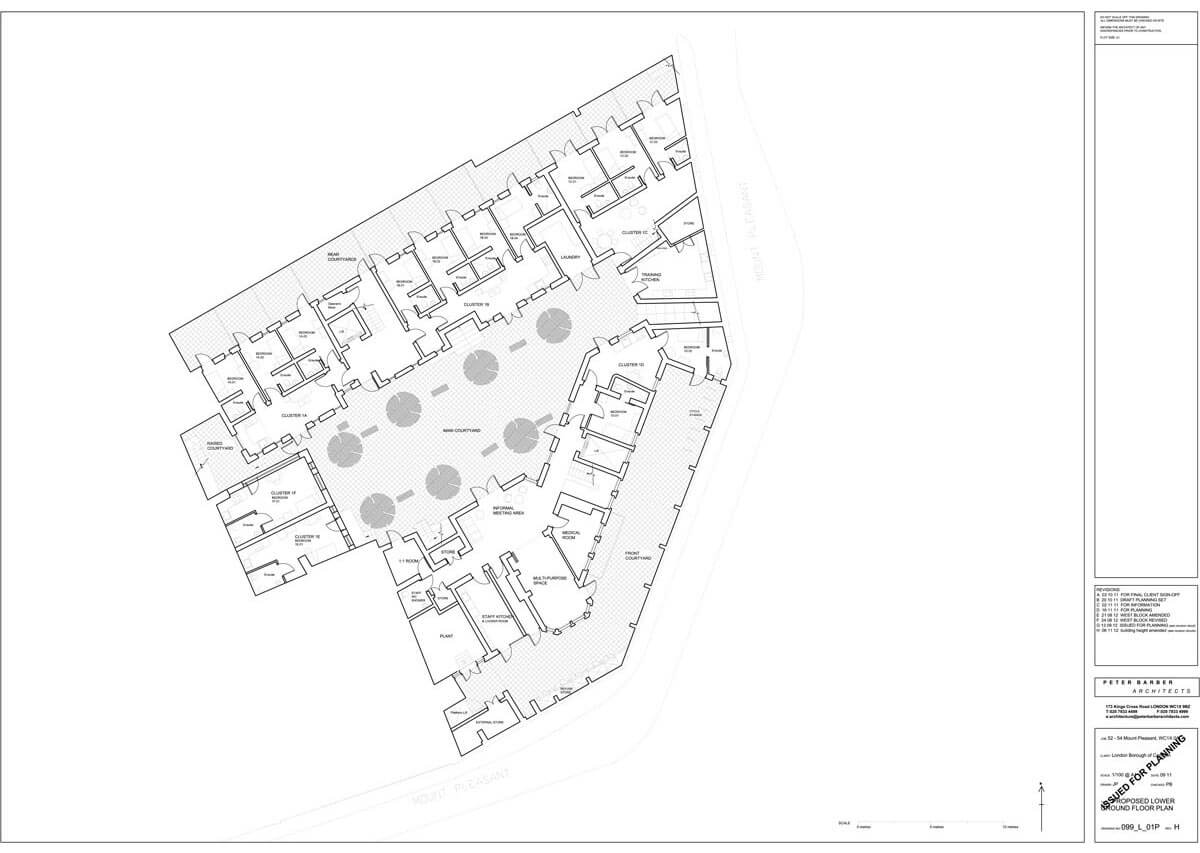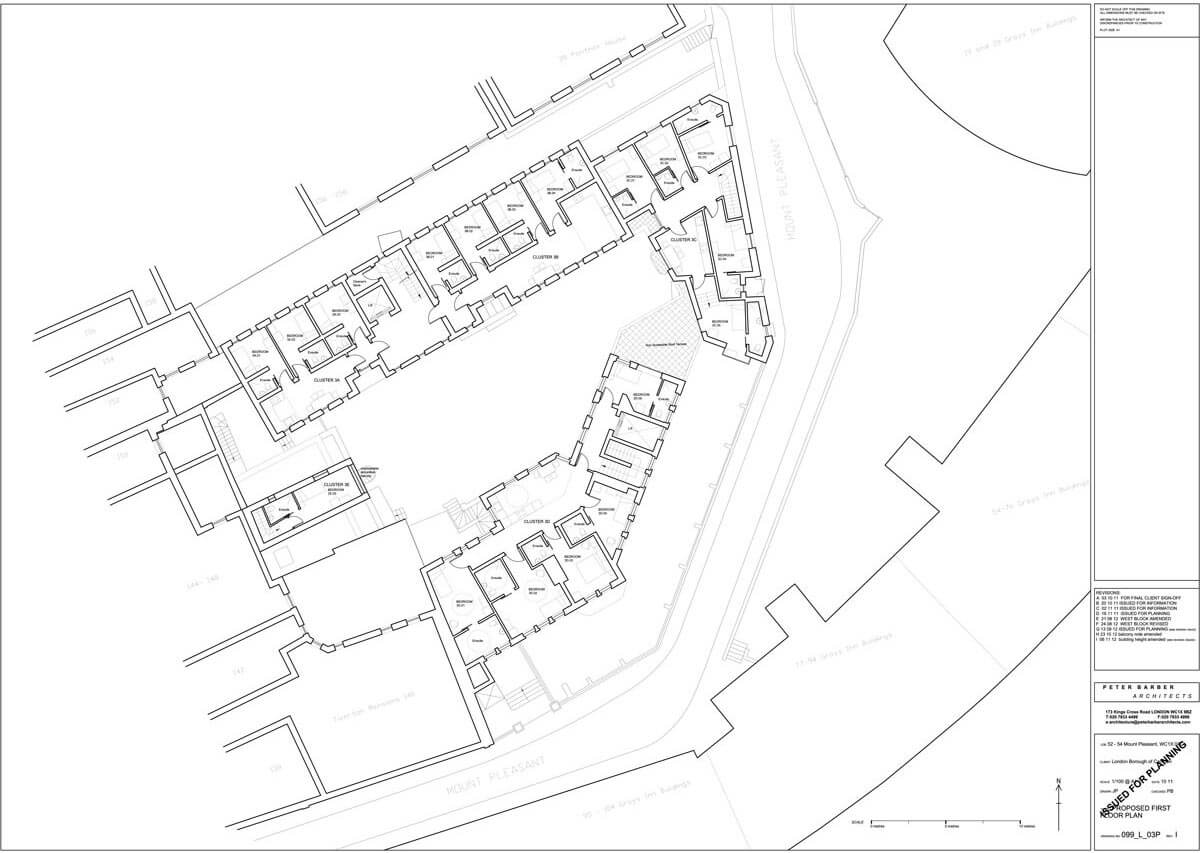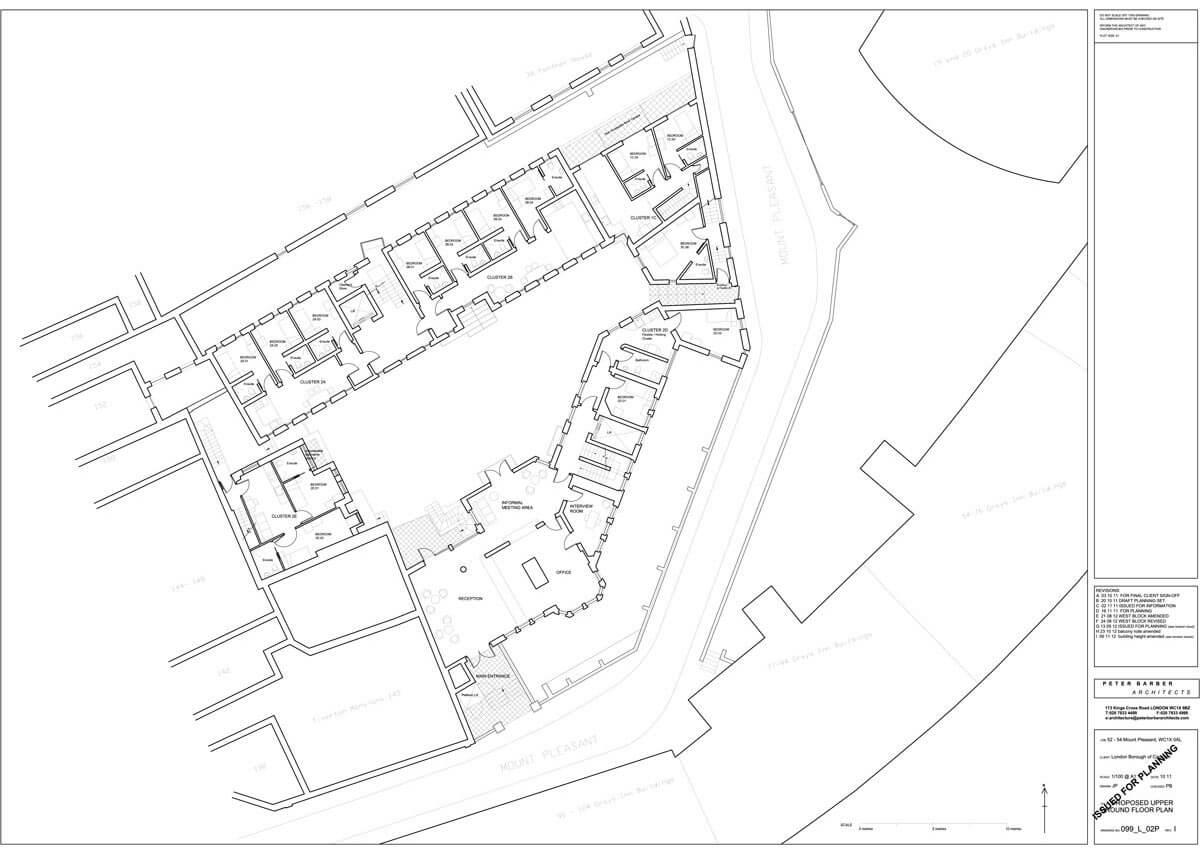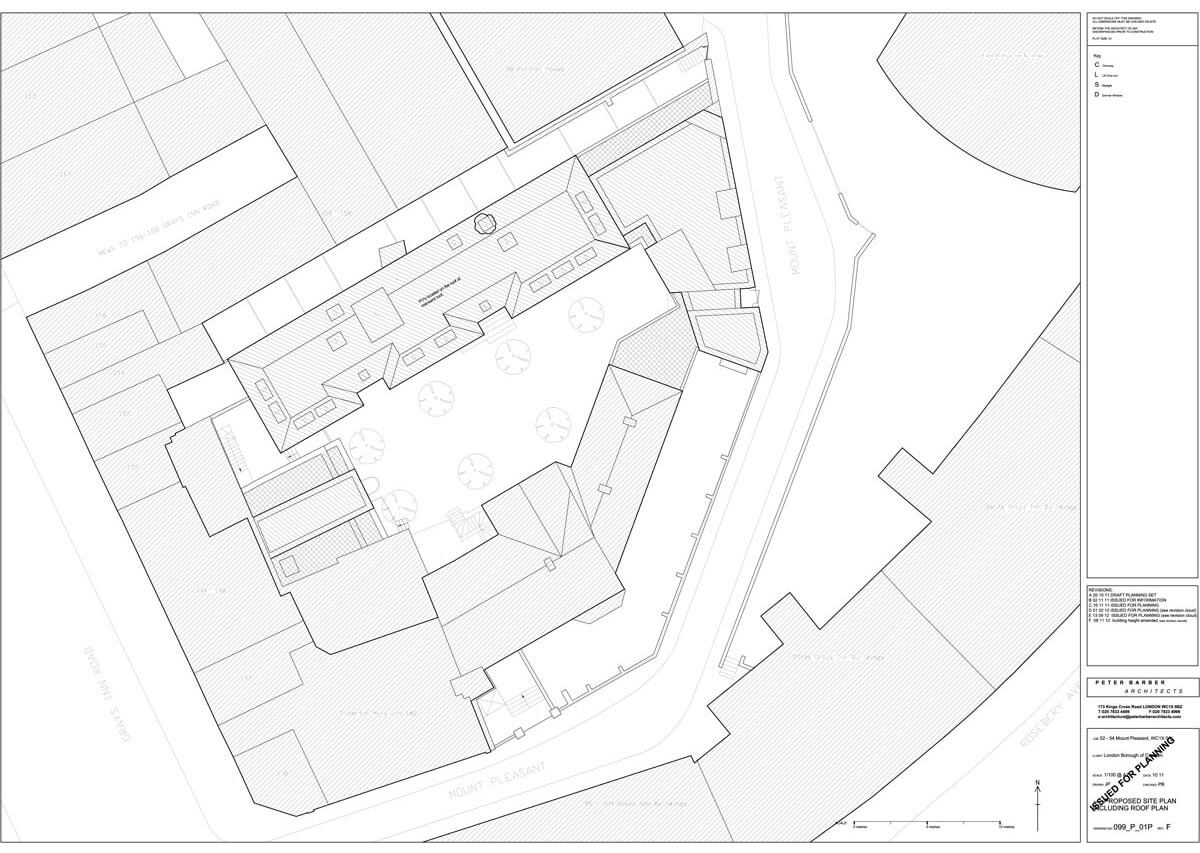Mount Pleasant / Peter Barber Architects
Mount Pleasant / Peter Barber Architects
Context
Mount Pleasant is a beautiful new sheltered housing project for homeless people set within a secluded and peaceful suntrap courtyard close to Gray’s Inn Road and High Holborn.
Residents of homeless hostels are among the most vulnerable people in society. A significant proportion of them have a history of drugs and alcohol abuse. There is a high incident of mental illness and the majority are workless. Many of them need a great deal of support with resolving health problems, securing a long term solution to their housing needs, learning basic life skills and where possible entering into training/ being given introductions leading to work. All residents are in need of a secure, comfortable, warm and dry place to call home.
Description
The project is entered from a tiny lane through the arched doors of the Victorian hostel building. The entrance is a light, bright, and airy space which opens directly out onto a delightful roof terrace. The tree lined courtyard below is the principle circulation of the project, its main meeting space is in a sense the social heart of the place with little spots for people to sit. There is direct access to a laundry, shared kitchens, a consulting room and the apartments which surround it. It is a place which encourages social interaction. Unplanned encounters between staff and residents which are a vital means of engagement and care of residents.
Interior
The hostel provides ensuite accommodation to 52 residents. There are little self-contained apartments for people who need a bit of space to themselves, accommodation in flats for those who are more gregarious, and there are larger accessible units for residents who struggle to get about.
The scheme
The courtyard itself is formed by the demolition and removal of the central linking part of the original ‘H’ block hostel and the patching in of the long facades with reclaimed and new bricks in the London Vernacular.
Two new apartment buildings, little houses really, stand sentinel at the short East and West ends of the courtyard. A racy new building fronting Mount Pleasant reinstates the back of the pavement terrace evident in 18th century maps.
The scheme is conceived as a collage of old and new buildings - a kind of palimpsest.
Sustainability
A commitment to sustainability in the early stages of a project is essential to the success of the scheme. A close working relationship with the Sustainability Consultant on Mount Pleasant Studios from the outset ensured that it was a key consideration throughout the design process. Design development focussed upon efficiency and passive design measures in order to reduce the emissions associated with the building, and followed the client’s brief to maximise the energy performance wherever possible.
Mount Pleasant Studios is part refurbishment and part new build – reusing existing services where possible, and a proportion of reclaimed bricks in the new buildings. This has reduced the embodied carbon of the development. The new build areas of the scheme all have brown roofs and air source heat pumps for space heating, which provides low carbon heating. Secondary glazing has been provided in the existing building to reduce heat loss and infiltration rates.
Usability and reliability was an important focus to enable the building to serve many different user groups. Lighting controls ensure the building is not lit unnecessarily, a mixed mode ventilation system in the auditorium space optimises the potential for passive cooling, and a high efficiency plant with advanced controls all facilitates maximum usability and reliability.
With a focus on a ‘fabric first’ approach, Mount Pleasant Studios exemplifies a quality building that will last for decades and withstand the rigours of a number of different user groups enabling it to provide fundamental support for current and future generations – to create socially sustainable communities.
“This building thoughtfully addresses the complexity of its immediate context.... there is a sense of peace and calm, but also of freedom to move unhindered between spaces...”
Owen Pritchard, Architectural Journal.
(18 October 2014)
Sketches & models
Drawings
Extra info
Client:
London Borough of Camden
Structural Engineer:
Rolton
M&E/Sustainability Engineer:
Eng Design
Project Manager/Cost Consultant:
EC HArris
Contractor:
Willmott Dixon
Developer:
London Borough of Camden
Acoustic Consultant:
Spectrum Acoustic
Completed:
07/2014



